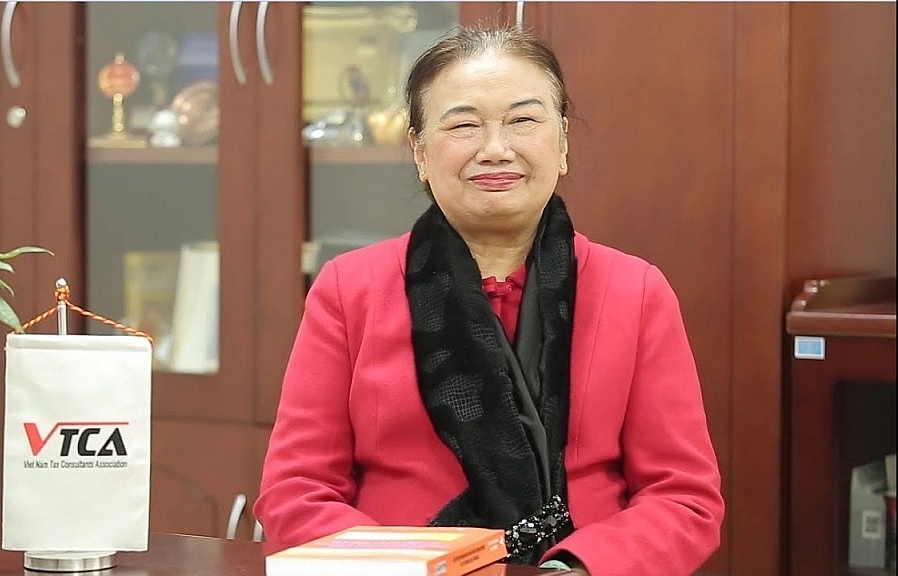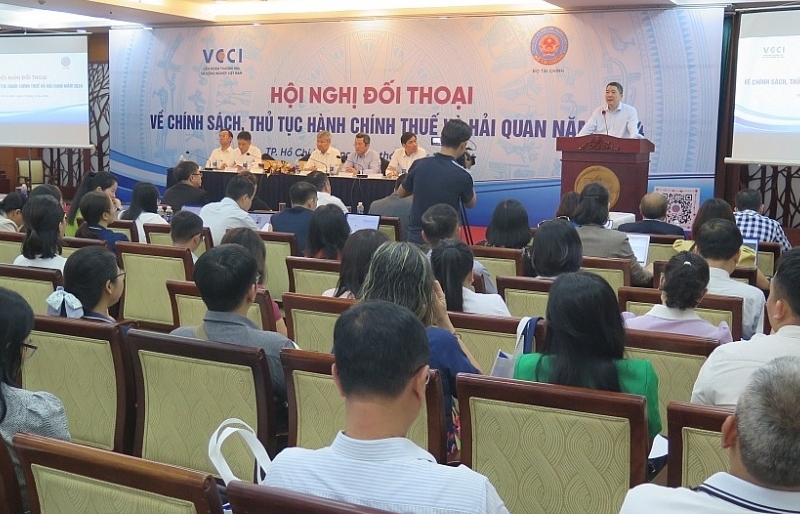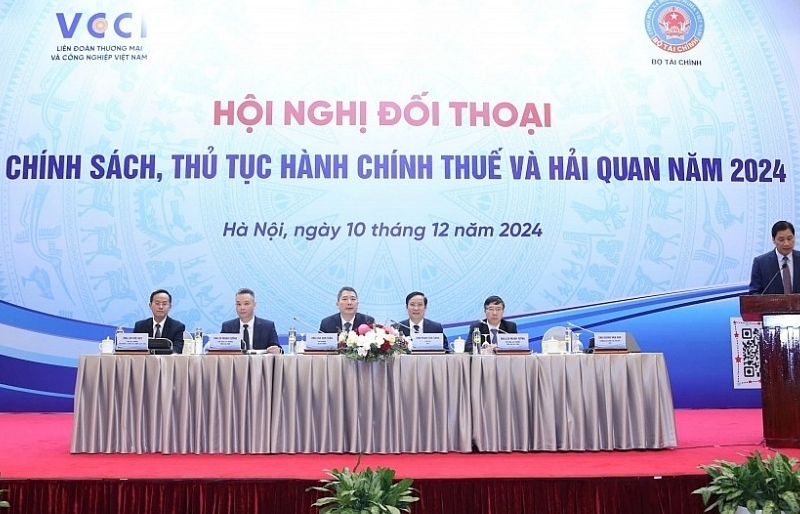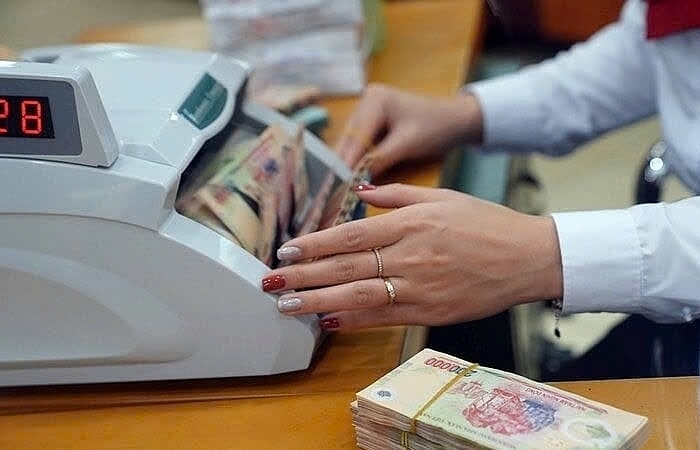Unify and standardize tax refund dossier classification index to ensure accuracy
| Strict control of VAT refund to avoid fraud and loss of budget | |
| Accelerate tax refunds |
 |
| Chairwoman of Vietnam Tax Consultants Association (VTCA) Nguyen Thi Cuc |
How do you assess the tax refund dossier classification index issued by the General Department of Taxation to apply risk management classification in tax refund?
On September 18, the General Department of Taxation issued Decision No.1388/QD-TCT applying risk management in classifying tax refund dossier by using information technology applications. Accordingly, the tax refund dossier classification index includes three index groups. The index group 1 and the index group 2 are applied to evaluate the overall tax refund risk of the enterprise. The index group 3 is built to analysis risk to be consistent with each period and management requirement.
The index focuses on identifying tax refund for enterprises using invoices of high-risk businesses in invoice management. In addition, the index focuses on evaluating the tax law compliance history of the business, the business representative/owner, tax refund history and the production and business activities of the business.
I think that with the index, the Tax authority will assess risks for firms that are refunded tax to create equality and non-discrimination in business activities. However, the Tax man still assess risky enterprises that need to be managed in each period and industry under the index group 3, for example: Index 16, group 3 “Enterprises whose business products are subject to warnings from tax authorities in each period”.
This shows that if the Tax authority identifies specialized and high-risk industry, the authority can analyze the risks of businesses in this industry by adding index in group 3 to analyze risk and automatically classify high-risk, medium-risk and low-risk businesses, thereby identifying targeting enterprises and high-risk enterprises that need to be checked and verified invoices.
Could the application of digital transformation help VAT refund faster?
The implementation of National digital transformation was approved by the Government in Decision No. 749/QD-TTg dated June 3, 2020. Over the past years, the Tax sector has made great efforts in tax administration such as perfecting the legal environment, developing infrastructure, providing electronic tax services in integrated and centralized manner, meeting e-Government, towards digital Government. Regarding tax refund, the Tax sector has performed e-tax refund and classified tax refund dossier by applying the information technology based on risk management, thereby accelerating and improving the efficiency of the digital transformation.
However, for the application of digital transformation in VAT refund, in my opinion, tax refund targets need to be unified and standard before being digitized. When the unified indexes are issued, the digitization will be accurately implemented, if the indexes are not unified will lead to distorted digitization. Currently, according to the tax agency's risk mechanism classification, 15% of businesses subject to tax refund have high risk, 30% low risk, and 55% medium risk. But if the criteria are not clear and scientific, the ratio may change. Therefore, a set of scientific and synchronous criteria is the first step in digitalization.
With the newly issued indexes, the calculation and determination of the taxpayer's risk level is carried out on the basis of big data statistics and is updated monthly. The tax refund module risk management application automatically provides tax refund dossier classification results. The automated risk classification ensures transparency and fairness in accurately identifying risky tax refund businesses, minimizing management costs and time for taxpayers and tax authorities.
The VAT refund in recent times shows that some Tax officers voice concern in performing this work due to risk and dangers. How should the regulations be amended and supplemented to limit the above situation?
Recently, during the supervision of VAT refund by the National Assembly's Finance and Budget Committee at six tax departments, tax authorities at all levels, Tax officers also expressed to the Committee about their concerns in performing public duties, especially in handling VAT refund documents. We know that some cases of VAT refund fraud causing revenue loss have been detected and prosecuted by the law enforcement bodies.
To effectively solve this problem, it is necessary to have regulations to protect, exempt, and minimize liability for tax officials. At the time of VAT refund settlement, the tax officer has based on the taxpayer's tax refund application, the records, documents... provided by the tax payer, and data on the Tax system to process VAT refund for the tax payer, but then the competent authorities discover that the taxpayer commits to tax fraud, leading to criminal prosecution, the tax officier will not be responsible for the taxpayer's violations.
For example, during processing the tax refund record for wood exporter, the Tax man sees that the exporter presented full products, customs declaration, importing country information, and legal input VAT invoices and pay tax via bank, it will refund tax for the taxpayer.
If the Tax man discovers the wood supplier and wood manufacture has committed violations in declaring input wood, used illegal invoices and documents, smuggled goods or intentionally declared raw materials inconsistent with reality, the tax officer will not be responsibility for the offences, and the supplier and the manufacture must be responsible before the law.
Thank Madam!
Related News

Tax sector achieves revenue target of about VND1.7 million billion
18:32 | 21/12/2024 Finance

Achievements in revenue collection are a premise for breakthroughs in 2025
09:57 | 18/12/2024 Customs

Enterprises face difficulties in tax refunds due to partners closing
10:01 | 17/12/2024 Finance

Answering many questions from businesses at dialogue conference on tax and customs policies
10:01 | 17/12/2024 Finance
Latest News

Finance ministry announces five credit rating enterprises
14:54 | 25/12/2024 Finance

The capital market will see positive change
09:44 | 25/12/2024 Finance

Corporate bond issuance value rises by 60 per cent
13:51 | 24/12/2024 Finance

Slower mobilization than credit may put pressure on interest rates
09:02 | 24/12/2024 Finance
More News

Fed’s foreseen rate cuts affect foreign exchange rate
14:12 | 23/12/2024 Finance

Untying the knot for green finance
11:08 | 23/12/2024 Finance

Ensuring efficiency and transparency in use and management of houses and land at State enterprises
13:54 | 22/12/2024 Finance

Vietnam's stock market to develop strongly and sustainably
19:08 | 21/12/2024 Finance

General inventory of public assets raises efficiency of use and management of country's resources
09:29 | 20/12/2024 Finance

Publicizes progress of public investment disbursement for important national projects
15:21 | 19/12/2024 Finance

Six SOEs to be transferred back to industry ministry
15:38 | 18/12/2024 Finance

PM urges stronger measures to manage interest rates
16:53 | 17/12/2024 Finance

Six SOEs to be transferred back to industry ministry
16:48 | 17/12/2024 Finance
Your care

Finance ministry announces five credit rating enterprises
14:54 | 25/12/2024 Finance

The capital market will see positive change
09:44 | 25/12/2024 Finance

Corporate bond issuance value rises by 60 per cent
13:51 | 24/12/2024 Finance

Slower mobilization than credit may put pressure on interest rates
09:02 | 24/12/2024 Finance

Fed’s foreseen rate cuts affect foreign exchange rate
14:12 | 23/12/2024 Finance



